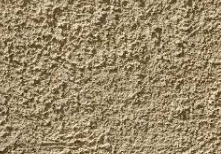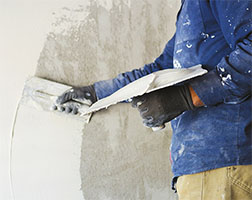 The concept of stucco , which comes from the Italian term stucco , refers to a mass that is formed by mixing glue water and white plaster, according to the first meaning mentioned by the Royal Spanish Academy ( RAE ) in its dictionary.
The concept of stucco , which comes from the Italian term stucco , refers to a mass that is formed by mixing glue water and white plaster, according to the first meaning mentioned by the Royal Spanish Academy ( RAE ) in its dictionary.
Stucco can also be a paste created with marble dust and slaked lime , to which plaster, alabaster or other substances are sometimes added. When the calcium hydroxide that is present in lime comes into contact with carbon dioxide, the stucco hardens.
Due to its characteristics, stucco is usually used to cover ceilings and walls . The material, on the other hand, can be polished, carved or modeled to create various figures or achieve decorative effects.
Depending on the mortar used, the stucco acquires different textures. That is why it can adapt to various shapes and types of construction . Stucco also contributes to waterproofing .
During the Renaissance , stucco was used as an architectural complement. On the walls of temples, for example, figures were often painted with white stucco . Colored stucco , on the other hand, was used in the decoration of castles and palaces.
One of the best-known stuccos is the so-called Venetian stucco , which emerged at the beginning of the 15th century in Venice . Its finish is similar to polished marble, and stands out for the multiple shades it can achieve. Venetian stucco is elastic, has great resistance and is easily applied.
Depending on the material on which you want to apply, the stucco must have different properties . On marble, a hard stucco is recommended since it can be polished, for example, while on wood the stucco must be flexible so as not to crack.
To use stucco correctly and achieve the desired finish , several layers must be applied with the help of a spatula, thanks to which the material can be smoothed until the surface is polished and shiny. In addition to the difficulty that its application entails, it is important to know how to clean the workspace once the process is finished to maintain it.
 Among the benefits of Venetian stucco is the fact that it prevents the formation of mold in humid places, which is why it is possible to apply it in the bathroom, although not in the shower space. Stucco can give us great results in several different situations, but it requires maintenance to prevent all the work from being ruined, and we must do this approximately every two years. The steps to clean stucco are as follows:
Among the benefits of Venetian stucco is the fact that it prevents the formation of mold in humid places, which is why it is possible to apply it in the bathroom, although not in the shower space. Stucco can give us great results in several different situations, but it requires maintenance to prevent all the work from being ruined, and we must do this approximately every two years. The steps to clean stucco are as follows:
* Degrease the wall and remove all traces of dust. For this we can use hot water and neutral soap;
* wait for the surface to dry before continuing;
* with the help of gauze, apply a specific wax product for this purpose, which can be found in stores such as hardware stores and supermarkets;
* pass a thin and uniform layer;
* With a wool glove, polish the surface using circular movements to leave it shiny, easier to wash and prevent the stucco from deteriorating.
As can be seen, Venetian stucco offers many benefits , and among them is also that it is very easy to wash. But people usually choose it over others because it offers very shiny finishes that allow you to decorate different spaces, such as columns, walls and even fireplaces. Some people opt for faux stucco , which is a paint that simulates real stucco. While it is easier to apply, it requires some effort and skill to make the result look as if several coats of stucco have been applied.
